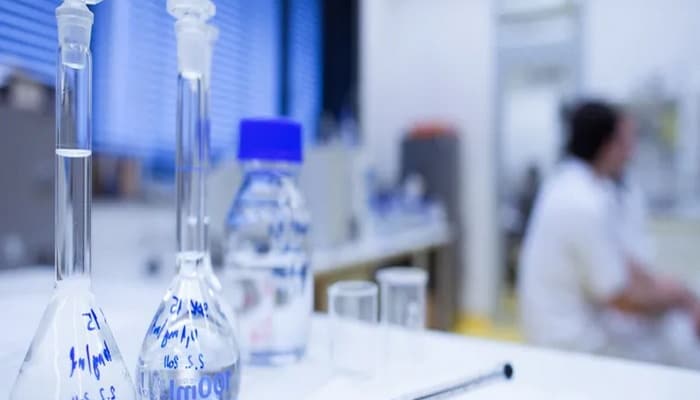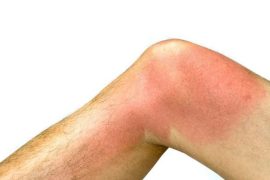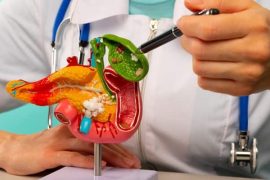Зміст
- 1 Viral skin diseases: Herpes
- 2 Viral skin diseases: how does infection occur?
- 3 Skin lesions
- 4 Viral skin diseases: how is herpes treated?
- 5 Viral skin diseases: Warts
- 6 Viral skin diseases: who do they happen to?
- 7 What do skin changes look like?
- 8 Viral skin diseases: how are warts treated?
- 9 Viral skin diseases: Molluscum contagiosum
- 10 Viral skin diseases: what causes the disease?
Viral skin diseases such as herpes simplex, warts, and molluscum contagiosum are very common among people. Although these diseases are easy to recognize and fairly harmless, they can be unpleasant and difficult to treat.
Viral skin diseases: Herpes
Herpes simplex is a common, often recurring rash around the mouth or genitals that poses a serious aesthetic problem. Herpes is a viral disease. There are two subtypes of the herpes virus: HSV-1, which causes damage to the mucous membranes of the oral cavity, facial skin and cornea, and HSV-2, which is responsible for infections in the genital area.
Viral skin diseases: how does infection occur?
Primary infection with HSV-1 most often occurs in childhood. Airborne droplets transmit the virus. The source of infection is a person with an active infection, as well as a healthy carrier of the virus. Primary infection leads to the appearance of vesicular lesions, then the virus penetrates the nerve endings and becomes latent there. Re-infection occurs due to various factors: exposure to sunlight, decreased immunity, stress, trauma to the mucous membrane.
However, infection with the HSV-2 subtype occurs through sexual contact in adults or in newborns during childbirth. Congenital herpetic infection is rare, and if it occurs, it is severe, causing a generalized rash, jaundice and damage to various organs.
Skin lesions
HSV-1 infection is characterized by the appearance of small, painful and itchy blisters at the interface of the skin and mucous membranes around the mouth, and sometimes the lesions can affect the nasal mucosa or cornea. If untreated, the disease can last up to 10 days and is sometimes accompanied by malaise and high fever. When infected with the HSV-2 subtype, the lesions, located in the genital or anal area, take the form of painful blisters that last about 10 days.
Infection with the herpes simplex virus can lead to serious diseases of the central nervous system, including: inflammation of the brain and other internal organs. If a mother develops herpes lesions on her genitals during childbirth, the baby may become infected and develop neonatal herpes, which is characterized by inflammation of the lungs, brain, liver, and kidneys.
Viral skin diseases: how is herpes treated?
When the first symptoms of the disease appear: itching and burning of the lip or a feeling of its enlargement, you should use one of the antiviral drugs (acyclovir, denotivir or tromantadine), available in the form of a cream or gel. The effectiveness of such therapy depends on early application of the drug to the affected areas. Pain and inflammation are also relieved by herbal infusions containing extracts of cinquefoil or lemon balm. Treatment can also be supplemented with oral non-steroidal anti-inflammatory drugs. An additional preventive measure is taking (in the form of infusions, drops, or tablets) herbal preparations that increase the body’s immunity. Unfortunately, in most cases these methods do not provide a permanent cure, and the disease often recurs.
In patients with disseminated infection of the skin or mucous membranes, in persons with immune disorders and in patients with genital herpes, acyclovir is used intravenously or orally. In the above cases, therapy must be carried out under the supervision of a physician.
Viral skin diseases: Warts
Warts that appear on the arms and legs are an unpleasant occurrence – they disfigure the skin and cause pain. Despite long-term treatment, it is difficult to get rid of them. Common warts, commonly known as warts, are caused by the human wart virus (HPV), a virus from the pox group. There are several varieties of these viruses – HPV-1 is responsible for the appearance of warts on the feet, HPV-1, 2, 4, 7 – cause the appearance of common warts, and HPV-3, 10, 29 – cause flat warts.
Viral skin diseases: who do they happen to?
Warts most often occur in children, adolescents, people with an individual predisposition, and people with reduced immunity (for example, taking immunosuppressants). The virus most typically enters the skin through scratches. Infection can occur in a swimming pool, sauna, gyms, and even by shaking hands. Warts are characterized by a long incubation period, i.e., the time from infection to the appearance of skin lesions, which can last many months. Common warts may disappear spontaneously in 6–12 months, but treatment sometimes takes several years.
What do skin changes look like?
Common warts appear on the fingers and nail folds, less often on the feet, especially in areas subject to pressure. They are lumps of different sizes, gray or brown, with a keratinized surface. Flat warts are located on the face, mainly around the mouth and temples.
Viral skin diseases: how are warts treated?
Although the changes sometimes go away on their own, they need to be treated. Warts, especially if they occur more than once, are unsightly, painful, can become inflamed, spread, and are contagious to other people. All types of warts are resistant to treatment. Common warts on the hands and feet can be treated in a variety of ways. One method is to lubricate warts with the juice of a wild plant – celandine. Pharmacologically, they can be treated with topical salicylic and lactic acid preparations in the form of a liquid or varnish. This treatment lasts at least 6–8 weeks. These products should be systematically applied to the skin, since lack of lubrication may interfere with therapy. Warts can also be destroyed with liquid nitrogen at -195 °C, removed surgically or with a laser.
The persistence of warts for many years, despite local treatment, may indicate an immune disorder and is sometimes an indication for immunological treatment.
Viral skin diseases: Molluscum contagiosum
Numerous small nodules, known as molluscum contagiosum, appear on a child’s skin and require prompt treatment to prevent their spread. Molluscum contagiosum most often occurs in children. Children with symptoms of atopy and people with reduced immunity are more susceptible to it.
Viral skin diseases: what causes the disease?
Molluscum contagiosum is caused by poxvirus, a virus from the poxvirus group. Lesions appear on the skin approximately 2–7 weeks after infection with the virus. Swimming pools and paddling pools are places where infestations typically occur. The main rash is a small, hard, semicircular, waxy-white nodule measuring 2-6 mm, with a characteristic central depression.
These lesions are usually very numerous, although sometimes they can occur singly, and then they are much larger. The most common sites of the disease are the hands, face, eyelids and genital area, but nodules can occur anywhere, even on the mucous membranes. They are typically not accompanied by any symptoms such as pain or itching.
Viral skin diseases: Treatment
Due to the high risk of infection, lesions should be treated as soon as they are noticed, as they can spread throughout the body. Treatment includes curettage, electrocoagulation, or mechanical extrusion of the contents. Each time after the procedure, the skin should be treated with iodine.








